OLD POST ALERT! This is an older post and although you might find some useful tips, any technical or publishing information is likely to be out of date. Please click on Start Here on the menu bar above to find links to my most useful articles, videos and podcast. Thanks and happy writing! – Joanna Penn
One of the reasons I moved back to London from Australia was the density of cultural treasures in this area of the world.
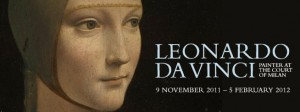
London's National Gallery is currently hosting a Leonardo Da Vinci exhibition; Painter at the Court of Milan and last night I went to see it. As I walked around and read his own words, the similarities between visual art and writing became more apparent.
1) Creation of a idealized world
Leonardo's finished paintings were often not direct pictures of the real world. They were improvements or allegories or portrayal of myth and story. Our writing is often the same. We take aspects of the world and knit them together to create hyper-reality, or we twist things, enhance aspects or disguise them. From the words of Leonardo himself, “If the painter wishes to see beauties that would enrapture him, he is master of their production; and if he wishes to see monstrous things…he is their Lord and God…in fact, therefore, whatever there is in the Universe through essence, presence or imagination, he has it first in his mind and then in his hands.”
2) Practice is critical
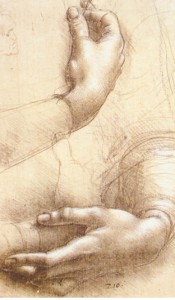
3) Character creation
This quote from Leonardo's diaries caught my eye. “When you make a figure, think well about what it is and what you want it do and see that the work is in keeping with the figure's aim and character.” In painting as much as in writing, you have to decide what you want, decide on the way the character will be and then create to that description.
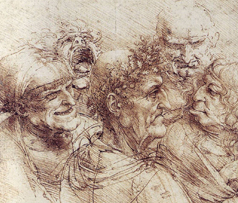
4) Use of archetypes
The Last Supper is a triumph of archetypes with Judas, in particular, being dark-skinned, hook-nosed and clutching a bag of money as the racist stereotype of a betrayer. But archetypes appeal to the human mind, we can instantly hang our thoughts on a pre-existing idea and it helps us understand the depths being portrayed. The saints are often pictured with the instruments of their martyrdom, Sebastian with the arrows for example. I love this language of symbolism and try to weave it into my own writing.
5) Multiple drafts
Drafting for the paintings of Leonardo started with the individual sketches and then culminated in a cartoon. The word is used here to describe a technique 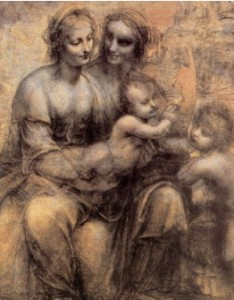
6) Editing
There's a lovely sketch of a kneeling angel where Leonardo has drawn the hand in two places, the same arm raised and lowered, in an attempt to see what the picture would look like with either option. This is an aspect of pentimento, an alteration where the painter has changed his mind during composition. This reminded me of the editing process where we change our work to improve it, either by something we see ourselves or what others help us with. The editing process is crucial to create a fantastic finished product.
7) Artist-entrepreneur
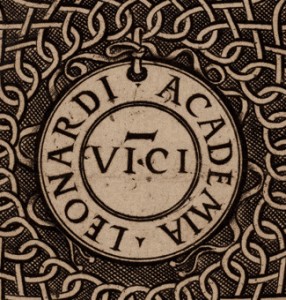
Leonardo was famous being a creative polymath – a painter, sculptor, engineer, but he was also an entrepreneur. He was paid for his works and if he didn't get paid, he sold them elsewhere. The 30 year wait for the payment due for the Virgin of the Rocks is a classic example.
He also had a workshop of artists who did the bulk work for him in order, presumably, to produce more work at a faster pace. I see this in the James Patterson model of writing where he is creative director and has co-writers working with him in order to produce almost a novel a month. Patterson has said “If I'm working with a co-writer, they'll usually write the first draft. And then I write subsequent drafts”. We may criticize his writing but he is one of the highest earning writers in the world and millions buy his books. All artists must consider money in order to survive and then thrive.
If you enjoyed this, you might also enjoy these posts inspired by art:
Do you find art inspiring?
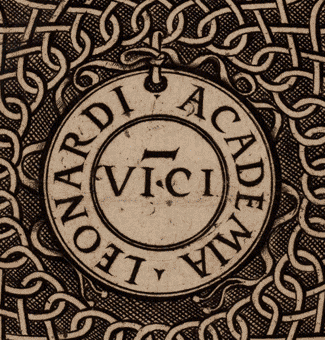
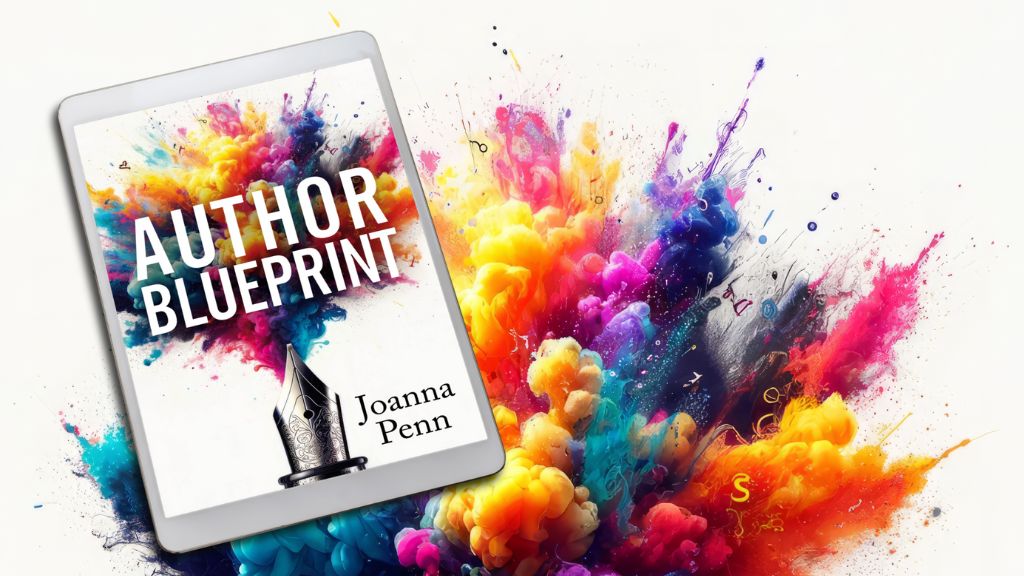
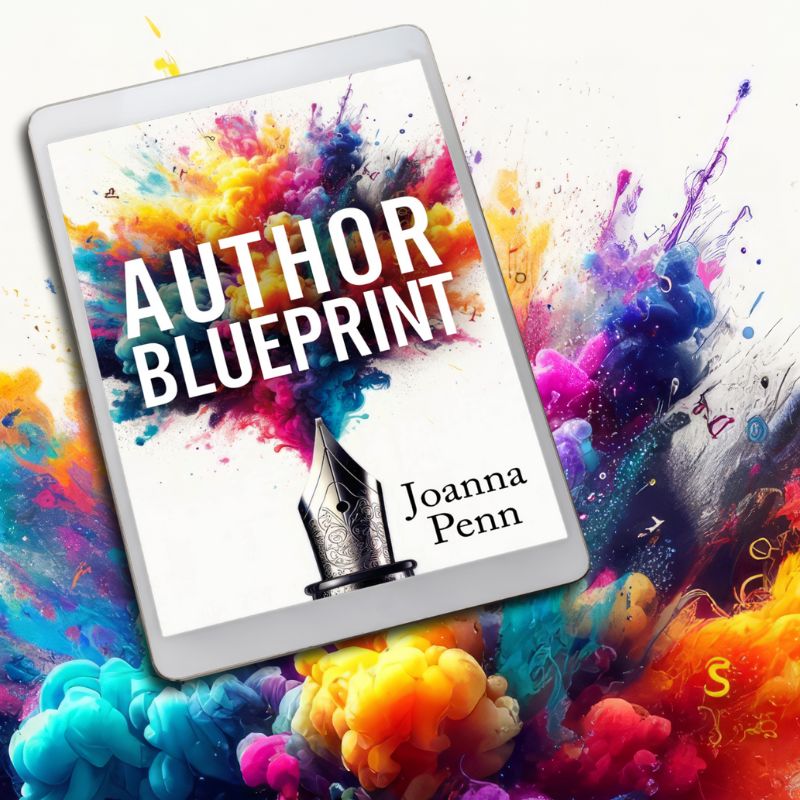
I love da Vinci. This was such a great and inspirational post. I would love to visit London and gather my inspiration from there. Art can definitely inspire anyone, I think.
Great post, Joanna.
Thanks. I think I’m going to hang out at the National Gallery more often – it’s full of creative inspiration.
Thanks a million for sharing the moving post about the one of a kind great artist da Vinci.
Great post. Thanks for sharing it with us. I particularly like number six, since I’m in the thick of editing right now and always.
Thanks for the post. I must get out to see that exhibit once I’m back in London. I find art to be quite inspiring too. I love to look at a painting and imagine the story behind it.
Thanks for sharing this post. While in college, I wrote a paper on the nature of beauty and came to the conclusion that while there is a place for art that exposes the gritty side of life, it does not inspire. Art, whether it be a painting or written word, when it aims to beautify or make life more meaningful tends to inspire its audience.
Janice
I do indeed! I’m a huge fan of Japanese comic books (the art in them is AMAZING) and that has influenced my writing alot. In reviews that I’ve gotten for one of my works, people often tell me that they would like to see it animated or draw in a Japanese graphic novel style, and I’ve recently learned that I am a visual writer….Maybe I should consider taking a screenwriting class, LOL. Very inspiring post as usual JoAnna.
Japanese visual art is hugely popular, not something I know much about but fascinating!
Writing is art just as anything drawn or painted is an art, so yes, I do find art inspiring! Da Vinci is easily a figure from whom we, as fellow artists, can learn: he honed his craft and went far and above what was the norm in his time. Wonderful post, by the way.
Do I find art inspiring? Absolutely! I’ve been an artist (though somewhat amateur) longer than I have been a writer. The colours of emotion and memory, the textures of the mediums used, subtleties of shadow and sunlight–it’s all there, begging to be captured in words. Abstract art and abstract thinking. Impressionistic art and the underlying theme of a writer’s work – it’s implied, but not altogether blatantly obvious until you step back and study the whole picture, so to speak.
I’m in the midst of editing a draft, “In Search of Iridescence” – a novel which includes a few fictionalized diary entries written by the daughter of Vincent Van Gogh’s physician.
As writers, if we pay attention to art, it sharpens our ability to observe and create a compelling story from a unique perspective.
Thank you for the greats posts!
Your book sounds fascinating – I love Van Gogh although his story is so sad. Color is something I love to learn more about and try to describe.
It might sound over-simplified, but you might have fun with a set of watercolour paints and paper. A student’s art set wouldn’t be expensive, allowing you to experiment. Do you include art/artists in your novels or plan to?
Van Gogh’s story is sad…I have a book of his translated letters, addressed to his brother, Theo. I will have to look through it again shortly. I didn’t realize it until I began researching his life, that mental illness struck various members of his family. Suicide seems to have been a genetic tendency.
Vivian, you must read An Unquiet Mind by Kay Redfield Jamison, and also Touched with Fire: Manic-Depressive Illness and the Artistic Temperament (1993) – Kay is bipolar and researches mental illness in artists. She is amazing, and the research is fascinating.
Both books by Kay Redfield Jamison are excellent. Van Gogh, A Stranger on the Earth is another book I really enjoyed.
Yes,art is art. I am married to a graphic designer and we talk often of the similarities between his art and mine.
This essay is a keeper. Thanks.
Hello, Joanna,
I had totally forgotten about the drawing technique of pentimento and you bring it all back, so thank you very much.
I’m thinking of the drawings of da Vinci and of Titian and the sense of movement they achieve through pentimento. So should the writer’s visions and revisions give life and movement to our work. I agree, it’s only achieved by going over and over the words.
I know there are writers—some of them mainstream—who are able to sit down and type a novel at one go and then publish it. They boast of writing 10,000 words a day. But can’t you tell that there are passages and characters in their books that are dull, stiff, repetitive, without spark or insight?
Hi Susan, I think those writers probably have 50 novels behind them already. It all takes time and refinement. I had never heard of pentimento so was thrilled to find out about it!
Hi Joanna,
great post, really nice ideas, and I couldn’t agree more. After research into how creativity works I’ve come to the same conclusion, that artists and even musicians use the same parts of the brain and the same processes to produce ideas. While teaching I use artists as examples of how the creation process works, particularly the idea of sketching in before you finalise.
Artists don’t draw a finished picture inch by inch perfectly first time. They sketch in broad strokes, refining and refining until they reproduce something which represents the image they have in their head of what the picture they are trying to “discover” looks like. They edit (rub out) lines and if it’s not working they put it aside and try again, without fear of failure. Fear of failure is what prevents you making the first mark with your pencil. 🙂
Be bold! Scribble! Make a mess and tidy it up! Lots of lessons to be learned there.
Thanks again, very thought provoking.
I’m definitely afraid of a pencil for drawing 🙂 Maybe I need to go on one of those drawing classes… not this year! I’ve been reading Twyla Tharp on the Creative Habit, she warns against pursuing too many different things. You need to find your main muse (in the classical sense) and stick with it.
I taught myself to paint in December 0f 1999. A couple of years ago, I realized that my paintings were trying to tell a story, so I decided that I’d write a novel to tell the story more completely. I *more or less* finished the novel last November and am in the process of finishing up some illustrations to go along with it.
The paintings helped me immensely in the writing of my novel. I used the paintings I had already finished as markers in my story and I had to figure out how my characters got from one marker to the next. It was terribly fun, and one of my beta readers said my writing had “super saturated imagery,” made possible by the time I spent developing the story visually. If you have any ability to sketch, even stick figures, I encourage you to do so with your writing. The visual activates a different part of your brain and can inspire many new ideas and different ways of thinking about your work.
I am new to this site, but Joanna has inspired me to start building up my own platform. I’m developing a blog that I plan on publishing in February. The focus will be how we can turn the difficult events and feelings in our lives into works of art (visual or literary), why we should endeavor to do so, and how the visual and literary arts relate to each other. Then I saw this post and thought that I had to comment.
Thanks Joanna for all the inspiration! I love hearing the enthusiasm in your voice. It gets me excited to work on my own material.
That’s awesome Steven, it sounds like you have combining the artist and the writer. My Dad has similar gifts so I understand where you’re coming from. Do let us know more about your book when it’s done, I’m always open to interesting guest posts from creative people and that sounds like an original angle.
I will definitely let you know more about my book when it’s done. I would love to do a guest post.